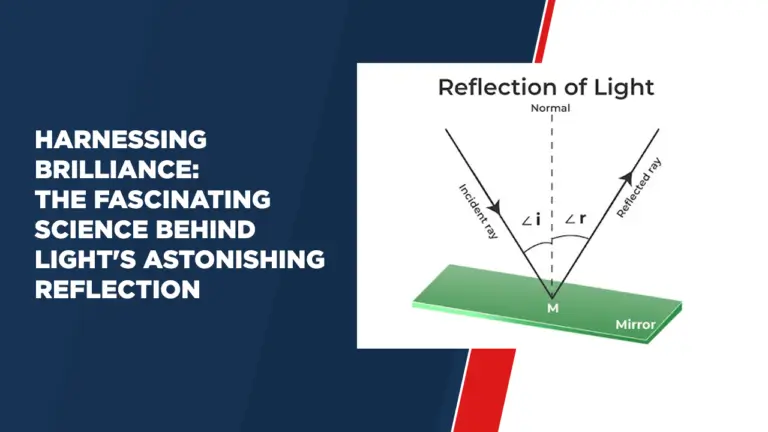Harnessing Brilliance: The Fascinating Science Behind Light’s Astonishing Reflection
Introduction: Unraveling the Nature of Reflection of Light
Reflection of light is a fascinating phenomenon that plays an important role in our daily lives and is essential to understanding how we see the world around us. This article examines the concept of reflection of light, the laws governing it, practical examples, and even its behavior on curved surfaces.
What is Reflection of Light?
Reflection of light refers to the bouncing back of light rays when they hit a surface. This is the basic principle behind mirrors, which allow us to see our reflection. When light hits a surface, it can either be absorbed, transmitted through the material, or reflected. The angle of incidence, which is the angle between the incident light ray and the normal (a line perpendicular to the surface), plays an important role in determining the angle at which the light is reflected.
Laws of Reflection of Light: Shedding Light on the Basics
The laws of reflection of light are two fundamental principles that govern this phenomenon:
- The First Law: The incident ray, the reflected ray, and the normal at the point of incidence all lie in the same plane. This principle ensures that the reflection occurs in a predictable manner, enabling us to anticipate the path of the reflected light.
- The Second Law: The angle of incidence is equal to the angle of reflection. In mathematical terms, θi = θr. This law ensures that the reflection process is symmetric and follows a predictable pattern.
Reflection of Light Diagram: Visualizing the Process
(You can include a labeled diagram illustrating the reflection process here.)
Reflection of Light Examples: Illuminating Instances
- Mirror Reflection: When rays of light strike a smooth and polished surface like a mirror, they undergo regular reflection, forming clear and sharp images. This is the reason why we can see ourselves in the mirror.
- Water Reflection: Still bodies of water also act as reflective surfaces. Sunlight falling on the surface of the water is reflected, creating cool reflections of the surroundings.
- Curved Surface Reflection: The behavior of light reflection on curved surfaces can be interesting. When rays of light strike a curved mirror like a concave or convex mirror, their reflection follows specific patterns that can either converge or diverge the light, leading to different image formation.
Reflection of Light at Curved Surfaces: Unveiling the Complexities
The principles of reflection also apply when light is reflected from curved surfaces, such as concave and convex mirrors. However, due to curvature, the angles of incidence and reflection at the mirror surface are different. For example, concave mirrors can focus light to form real or virtual images, depending on the position of the object relative to the mirror.
Conclusion: Reflecting on the Beauty of Light
Reflection of light is a fascinating phenomenon that has practical applications in our lives, from mirrors that aid our aesthetics, to optical devices that shape modern technology. By understanding the laws of reflection and how they apply to curved surfaces, we gain insight into the complex ways that light interacts with our world. So, the next time you look at your reflection in the mirror or marvel at the play of light on water, remember that these everyday phenomena are manifestations of the deeper principles of light reflection.




